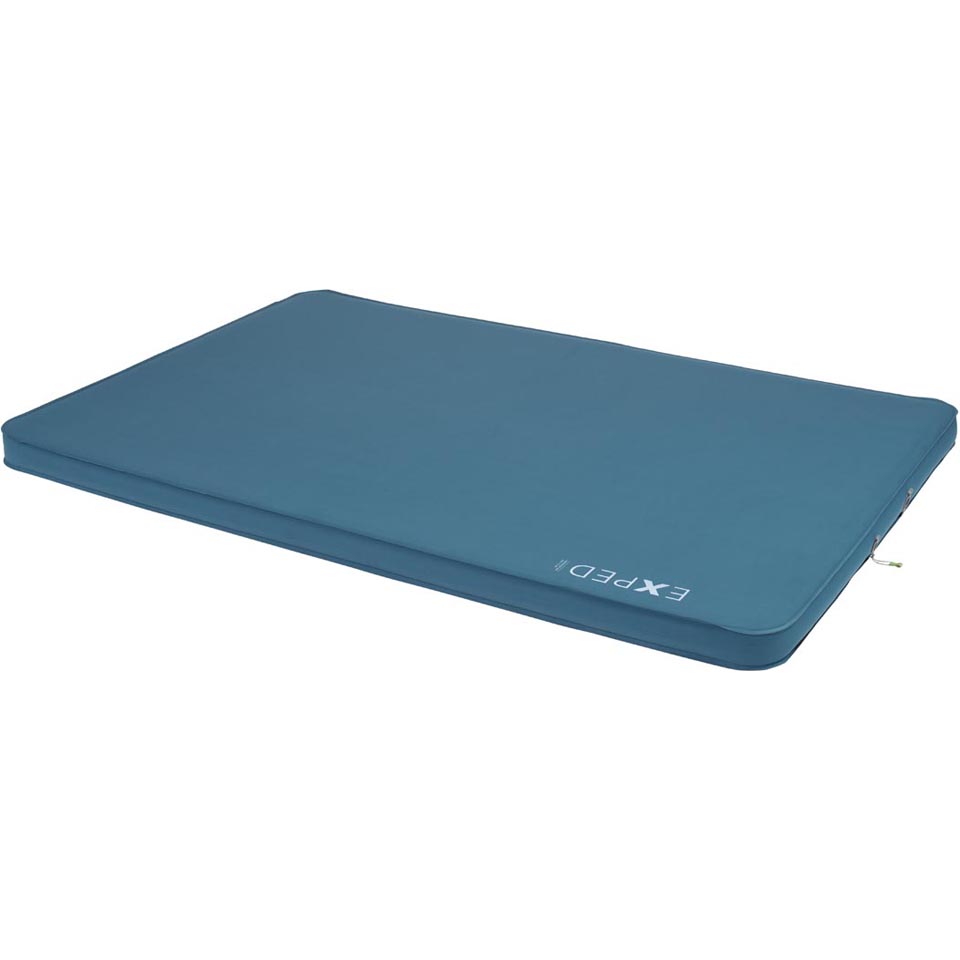
In summary, I'd recommend this comfy setup if you have the time and patience to deal with it afterwards. The Exped MegaMat 10 is more than a sleeping pad, its a real bed that happens to pack up small and fit in tents. No matter how I mess with the inflate/deflate valves, there's always air stuck in the mat. I spend around 20 minutes every time attempting to get it nice and flat and eventually give up. Secondly, good luck ever fully deflating the mat. Yes, my expectations are correct- I know it's not geared towards tent campers and it's not meant to be stowed away and taken out every day. It's more difficult than any pad, tent, or sleeping bag than I've ever used. The only drawback is the mat does not come with a pump (as it is sold. Once you have it out of its pack sack, you might as well give up on ever fitting it back into it. Ive even considered sleeping on it while at home. Where this sleeping mat disappoints is in its deflating and its storage. The size is just right for car camping in my 2000 Toyota 4Runner, and just big enough for yourself and an SO, assuming you're comfortable with one another. Exped Deepsleep 7 5 is a good camping mattress equipments for Camping & Hiking. In that regard, I see no way it could be more comfortable. Worth It? Depends on Your Time & Patience Waterproof Compression Bag and Telecompression Bag We purchased the 1 x Exped DeepSleep Mat 7.5 Sleeping Pads, Medium Wide, 7640445451635 from Camp Saver and got a great price. Note: Even the most elaborate suspension system can only work perfectly when fitted correctly! And as no two backs are identical, we recommend testing backpacks with sample weights in an outdoor specialty shop.ĮXPED sleeping bags come in different lengths and widths, depending on the style, to ensure a good fit for a variety of different users and body types.ĭimensions (closed): 20.1 × 10.2 × 7.5 in

Use a measuring tape to measure the distance between the top edge of the shoulders or C7 vertebrae (the one that protrudes when facing down) to the top crest of the hip bone (pelvis). But no rule without exceptions and sometimes a shorter torso length is better, for example in alpine or mountaineering situations where a short back allows easy access to the climbing harness. The center of the hipbelt ideally rests on the hip bone crest (pelvis) in order to bear the bulk of the load (refer to diagram) especially on large internal frame backpacks.

Defining torso length is not necessarily critical on a daypack but crucial on backpacking or alpine touring packs, as only perfect fit can warrant transfer of a bulk of the pack weight to the hips. Depending on pack volume and intended use the suspension system of a backpack becomes an essential feature.


 0 kommentar(er)
0 kommentar(er)
